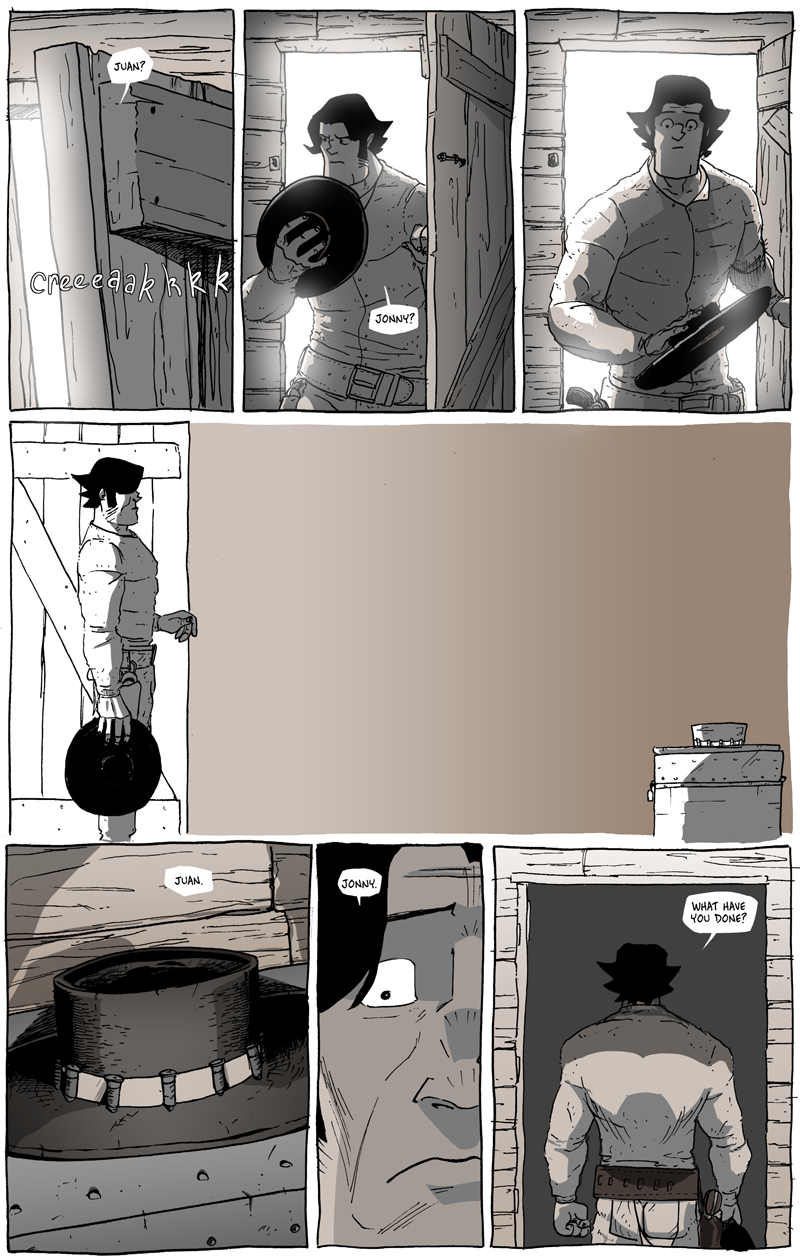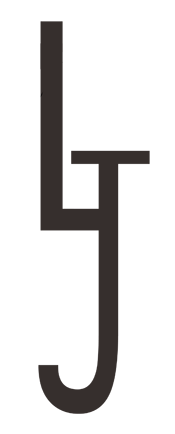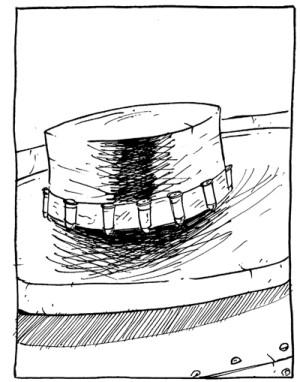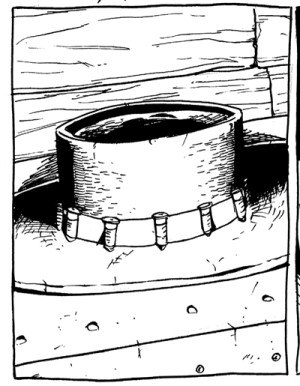Worst Comes To Worst
This page was a fun exercise in a variety of ways. Obviously, I play with format and layout, but more happened behind the scenes than may be immediately visible to the average reader.
First and foremost, one of the things that informs me most for the important moments in the comic––and I’ve written about it a little before, with regard to kabuki plays (the concept; I haven’t actually seen any kabuki plays, but I greatly appreciate their theoretical underpinnings)––is that I really like the aesthetic of looking at things as if one were in an audience at a play. Hence, the fourth panel when scenery and detail get stripped away for the symbolic importance of the moment; in this case, when Long John sees a remnant of his previous life in front of him for the first time in the story.
In truth, we (as readers) have seen the hat once before (albeit in dream form), but this is the first quote-unquote tangible moment a piece of Long John’s clothing has appeared in the comic, and I really wanted it to hit hard.
Those moments in plays really stood out for me more than they have in any other media, and the interesting thing about plays is that, as an audience member, you don’t necessarily get the benefit of a dramatic angle. The straight-ahead, stripped-down aspect of the shot has always held a lot of weight with me, and it’s something I readily bring to Long John.
With that in mind, I struggled greatly with that fourth panel. I tried to make it more dynamic and “interesting.” However––and I guess it’s my own aesthetic bias shining through––nothing worked as well as just showing it straight-on. So, I kept it.
Another interesting aspect of this page is the fifth panel. Only once before have I had to re-draw a panel. I got as far as the “coloring” stage for this page when I realized that I wasn’t happy with the close-up of the hat, which originally was much messier and, if I may be frank, lazy:
I haven’t done this very often (only once before, though I hadn’t mentioned it), and this isn’t a tactic I keep in my back pocket––I don’t operate under the idea that “I can redo it later”; I try to get it right on every page––but every now an then I just can’t let a little slip-up go by. My process is to redraw it on a separate piece of paper, cut it out, and literally tape it onto the page and re-scan it. I care most about cohesion and continuity (aesthetically), so the last thing I want to do is haphazardly piece a page together––I’ve done that more than once while learning how to make comics.




Discussion (3) ¬
This is a great page and I always appreciate when you talk about the work.
Thanks! This page was a little bit of a risk, but I find those risks pay off more often than not.